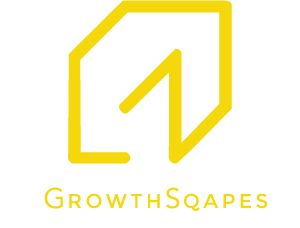Customer Centricity is one of the top buzz words in the business world today. While there’s a general understanding about it being related to various aspects that focus on delivering a great customer experience leading ultimately to happy and satisfied customers, there’s a lot more to it than it meets the eye. Some statistics about customer centricity as captured by HubSpot are as follows:
- Poor customer service costs $1.6 trillion is losses each year.
- 76% of customers expect their needs to be understood by organizations.
- More than 80% organizations who prioritize customer experience report revenue increases.
- Companies that are customer-centric are 60% more profitable than those that aren’t.
- Customers are willing to spend 17% more in return for a good experience.
This builds into the following outcomes:
- Improved customer satisfaction and retention rates
- Greater business success through positive word-of-mouth customer referrals
- Increased potential for upsell and cross-sell
- Increment in the Customer Lifetime Value metrics
The question however arises is that can this be achieved just by individual focus on customer centricity while dealing with the end customer? The resounding answer to this is ‘No’. This is just the tip of the iceberg; what is the center of visible focus. The real hero is what lies beneath the visible surface of this iceberg in the depths of the invisible world of customer centricity. Thus, customer centricity is a mindset, making it a behavioural aspect that is driven by culture. In other words, it’s a culture of overall customer centricity within an organization that builds up and leads to a commitment and zeal for customer centricity in an organization.
But then, how does this culture of customer centricity come into being? This is where the role of organizational leaders comes into the picture. The organizational leaders need to act and be, in certain ways to be able to shape a culture of customer centricity internally. Note that, leadership development programs can orient the leaders towards the same. This begins with a focus on the internal customers – the employees, and eventually leads to an enhanced focus on the external end customers.
Let’s look at some ways in which this can be achieved:
- Identify their Customers: Leaders need to identify that their first set of customers exist within the organization – the employees. The way they envisage and treat the employees sends a strong message about the organizational commitment to customer centricity both internally and externally. The greater the focus on keeping the internal customers happy, the more it translates into organizational identification, commitment and zeal amongst them to deliver an exceptional experience to the external/end customers – the client and end users.
- Know their customers: Once the leaders have identified the two sets of customers, the next step is towards familiarizing themselves with them. Again, starting with the employees, it is important to understand their needs, expectations and demands to be able to build an organizational climate that fosters the practice of customer focus and empathy. This could, in turn, motivate the employees to focus on the needs, expectations and demands of the external customers by way of understanding their preferences, expectations, industry/sector, competition, buying motivators, etc., thus leading to a deeper business understanding about the end customer. It goes needless to say that this information thereby equips the organization to attempt to deliver exceptional customer experience and service to the end customer by going above and beyond the expected levels of service and delivering a value proposition in each encounter.
- Organizational Vision, Mission & Value Alignment: There exists a need for the organizational leaders to communicate effectively with the employees in terms of the organizational vision, mission and values. This communication helps the employees gain valuable insights into the purpose and identity of the organization as a whole and allows them a chance to align themselves with it. Once this alignment is achieved, the employees drive this agenda by being committed and motivated to the organizational vision, mission and value of delivering exceptional customer experience and service, thereby leading to an organizational culture of customer centricity.
- Empower the Internal Customers: Leaders should aim to empower the employees with the right tools, resources, training, autonomy and trust in their decision-making abilities. This leads to enhanced ownership and accountability amongst the employees and enables them to support the external customers by delivering impactful and personalized experiences, thereby leading to both loyal, engaged and motivated internal and external customers.
- Listen to their Customers: For a leader to shape a culture of customer centricity, the most important weapon is their listening skills. It starts with listening to the internal customer through employee surveys, feedback, reviews, social media, complaints, etc., and acting on them to bring about the desired cultural change/improvement. This may involve having meaningful interactions with them, asking the right questions and empathizing with them. Once the internal customers feel listened to and cared for, their commitment, intent and zeal to deliver a similar experience to the external customers goes up radically. This gets reflected in external customer experience metrics like higher customer satisfaction scores, net promoter scores, customer lifetime value and lower customer churn rates.
- Lead by Example: Leaders would be successful in shaping a culture of customer centricity by leading from the front by way of setting examples. They ought to take every opportunity of ensuring a delightful and exceptional experience for the internal customers – the employees by way of preempting their needs and expectations and proactively catering to them, alleviating their problems and complaints and acting on their feedback. This would set an example in front of them and motivate them to act in the same way towards the external customers. This would lead to customer delight time and again and firmly establish a culture of customer centricity in the organization.
The road for leaders to shape a culture of customer centricity internally is a long one, that would require them to navigate past various twists and turn along the way. Merely investing in customer interaction training or customer service skills training is not the answer. It needs commitment, patience and perseverance as the magic ingredients that can help leaders on this path of continuous improvement. They should definitely remember that it’s the infectious phenomena that happy and satisfied internal customers would lead to happy and satisfied external customers; just like a smile leads to another smile. Moreover, it’s by acting on the changes inside that the change gets reflected outside.
This blog has been written by Namita Singh, Consultant & Project Manager at Growthsqapes

